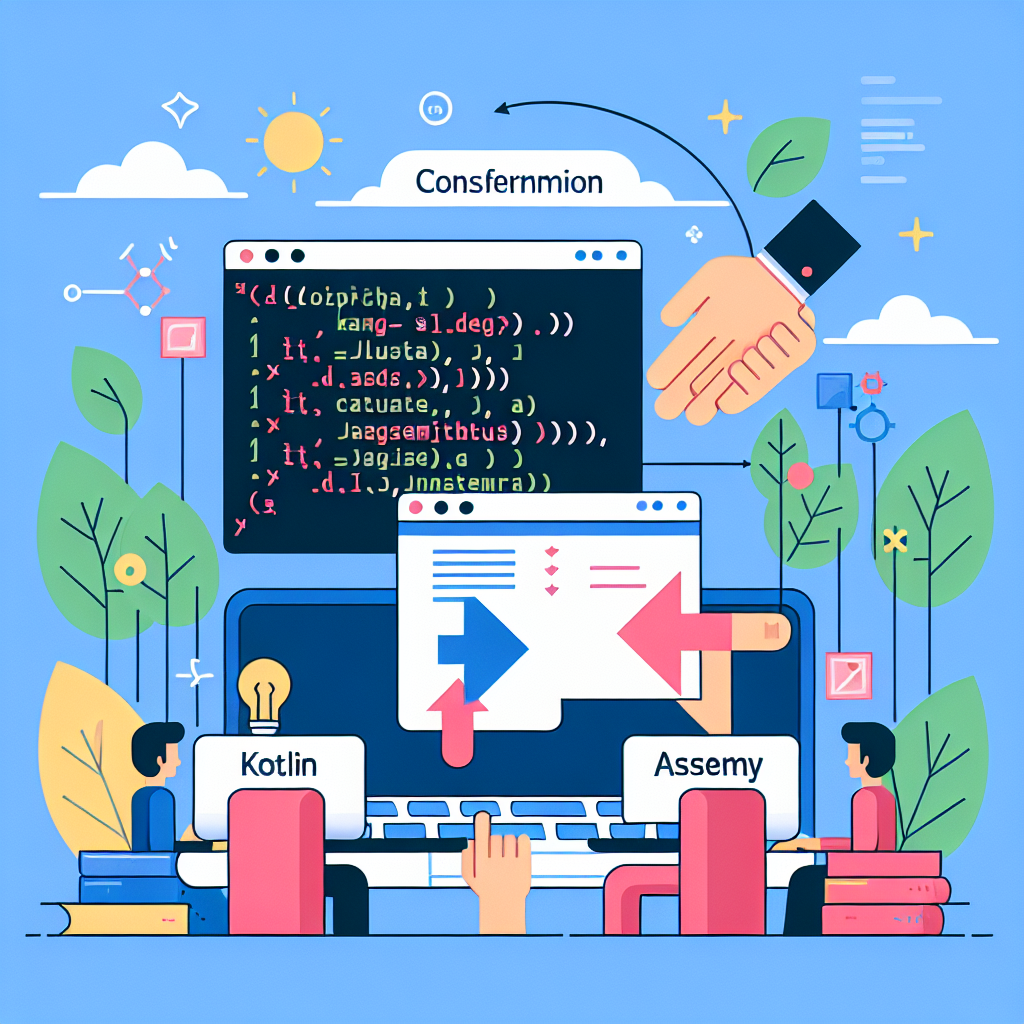Convert Kotlin to Assembly: Fast, Easy Tool Online
Unlock the power of Kotlin to Assembly Language conversion with our innovative tool. Boost performance and streamline development. Try it now for seamless coding!
Source Code
Converted Code
Output will appear here...
Transform Kotlin code into efficient assembly language with our powerful conversion tool. Ideal for developers seeking to optimize performance and gain low-level control, this tool enhances application speed and resource management. Perfect for embedded systems and performance-critical applications, it bridges high-level coding with machine-level precision.

Kotlin to Assembly Language Conversion Tool Link to this section #
The Kotlin to Assembly Language Conversion Tool is designed for developers seeking to optimize their Kotlin code by understanding its low-level assembly language representation. This tool is crucial for performance tuning, debugging, and gaining a deeper insight into how Kotlin code interacts with the hardware.
Key Features: Link to this section #
- Code Conversion: Translates Kotlin code into x86 or ARM assembly code, facilitating a better understanding of the compiled output.
- Performance Analysis: Helps identify bottlenecks and optimize code by analyzing the assembly output.
- Educational Insight: Ideal for those learning about compiler design and low-level programming.
How It Works: Link to this section #
Input Kotlin Code: Paste your Kotlin code into the input field. For example:
fun main() { println("Hello, World!") }Choose Architecture: Select the desired architecture (e.g., x86, ARM).
Generate Assembly: Click on "Convert" to generate the corresponding assembly code.
Example Output: Link to this section #
For the Kotlin snippet above, an x86 assembly output might look like this:
section .data
msg db "Hello, World!", 0
section .text
global main
main:
; print the message
mov rdi, msg
call puts
ret
Benefits: Link to this section #
- Optimized Code: Understand and optimize performance-critical sections of your app.
- Debugging: Trace and resolve complex bugs by inspecting assembly instructions.
- Educational Tool: Learn how high-level Kotlin constructs are translated into low-level machine instructions.
Related Keywords: Link to this section #
- Kotlin compiler
- Assembly code optimization
- Low-level programming
- Code performance analysis
Additional Resources: Link to this section #
For more information on Kotlin's compilation process and assembly language, consider visiting:
This tool empowers developers to bridge the gap between high-level Kotlin code and its low-level execution, providing insights essential for efficient software development.
Frequently Asked Questions
How can Kotlin code be converted to assembly language?
Kotlin code is typically compiled to bytecode for the Java Virtual Machine (JVM). This bytecode can then be further compiled to native machine code using tools like GraalVM's native-image, which can generate platform-specific assembly code as part of the native binary creation process.
What tools are necessary to view Kotlin code as assembly language?
To view Kotlin code as assembly language, you can compile the Kotlin code to JVM bytecode and use tools like the JVM's `javap` disassembler to convert the bytecode into a more human-readable form. For native Kotlin code compiled with Kotlin/Native, you can use tools like `objdump` or `gdb` to examine the resulting binaries at the assembly level.
Why would developers want to translate Kotlin to assembly language?
Translating Kotlin to assembly language can be beneficial for performance optimization, debugging at a low level, and understanding the under-the-hood operations of compiled code. This process can help developers identify performance bottlenecks, verify the correctness of optimizations, and gain insights into the compiler's behavior.